Iceland – the Land of Fire & Ice – is well-known for its natural wonders, but did you know that winter brings its own special range of amazing spectacles, from the northern lights and ephemeral ice caves to frozen waterfalls and an annual gathering of orcas. Read on to learn more about the natural wonders that lie in store during a visit to Iceland between October and April…
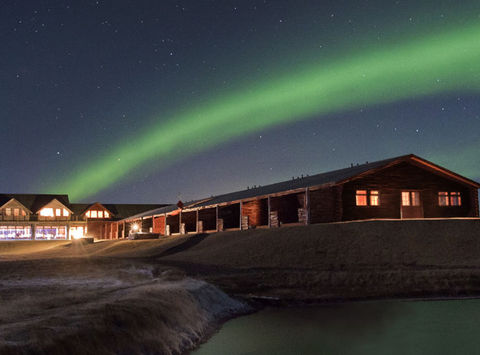
Northern Lights
Iceland is a superb destination for chasing the aurora borealis. Drive 90 minutes or so north or east from the bright lights of Reykjavík, for example, and you’ll find yourself in the heart of rural Iceland, where night skies are big, dark and free from artificial light pollution. Two of our favourite hotels, Ranga and Husafell, are located here. Both offer an aurora wake-up service, so you can go to bed confident that you won’t miss the northern lights if they appear. Slip into one of Ranga’s outdoor hot tubs and you can lie back and soak up the cosmic light show. The hotel even has its own state-of-the-art observatory, offering spellbinding views of not only the aurora, but the Milky Way, neighbouring planets and distant nebulae.
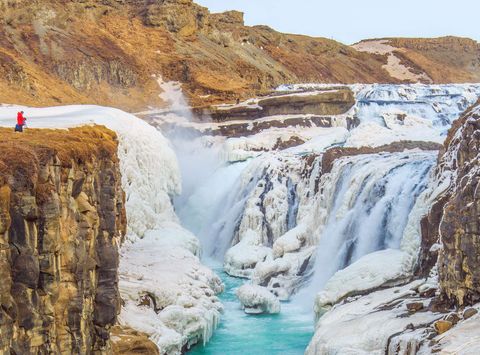
Frozen Waterfalls
Something quite extraordinary happens to Iceland’s waterfalls during winter. They don’t simply freeze – they become intricate, organic ice sculptures… nature’s very own frozen art form. Spray turns to thickly-textured frost on cliffs and gorges, while plumes of water are transformed into organ-pipe columns of blue and white ice. It’s unusual for Iceland’s mighty cataracts to freeze solid – instead you get a wonderful contrast between water in motion and water in freeze-frame. Some of our favourite, and most accessible, winter waterfall spectacles include Gullfoss (a highlight of the Golden Circle), Seljalandsfoss and Skogafoss in South Iceland, Hraunfossar in West Iceland and Godafoss in North Iceland.
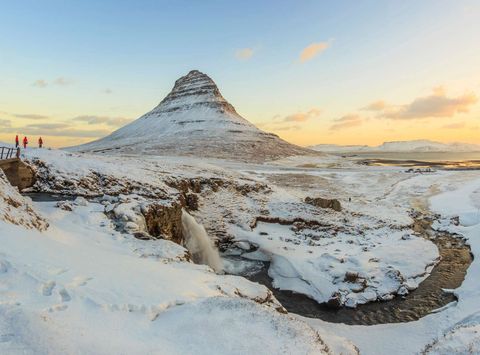
Mountains of Snow and Ice
Like its waterfalls, Iceland’s mountains get an artistic winter makeover, striped black and white, snow upon basalt, like great slabs of Vienetta ice cream. On the Snaefellsnes Peninsula, 463m-tall Kirkjufell, or Church Mountain, rises dark and jagged, like a dorsal fin rolling through the snowy crests and troughs of a mountainous sea, while Snaefellsjokull (a volcano nearly 1,000m taller) squats at the tip of the peninsula under a generous dollop of permanent ice. Although the 4WD tracks that criss-cross the Highlands of Iceland’s interior are closed to self-drive tourists during winter, you can still join a guided superjeep safari led by a professional driver-guide. Travelling in an all-terrain Superjeep, set off into the mountain wilderness of Thorsmork, grappling with volcanic slopes, snowfields and glacial rivers.
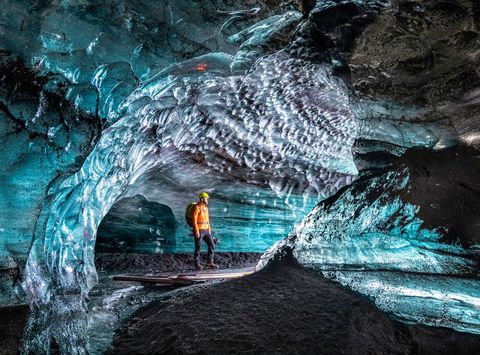
Ice Caves
Just as the northern lights are a recurring phenomenon (visible in Iceland from September to April), ice caves are another seasonal treat. Created when glacial meltwater channels freeze solid, these extraordinary natural wonders can only be explored between mid-November and early March. The annual cycle of melting and freezing means you’ll never see the same ice cave twice. Each one is unique. Venture inside on a guided tour and you’ll enter a surreal world of blue ice, reflecting the light through intricate patterns and natural sculptures. Some of Iceland’s best ice caves can be found in the Vatnajokull and Kotlujokull glaciers.
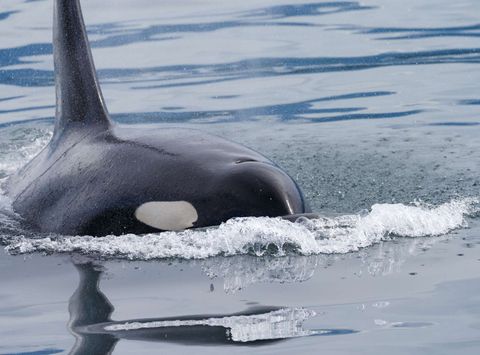
Orcas and Winter Wildlife
Perhaps the most unexpected natural wonder to witness during an Icelandic winter is the gathering of large pods of orca along the Snaefellsnes Peninsula where shoals of overwintering herring prove irresistible to the hungry cetaceans. Our pioneering orca watching breaks in March offer riveting encounters on expert-guided boat trips. By night, our guides take you to the best spots for watching the northern lights. Other winter wildlife highlights include superb birdwatching – large rafts of seaducks shelter in the bays, while white-tailed eagles soar above mountain ridges.
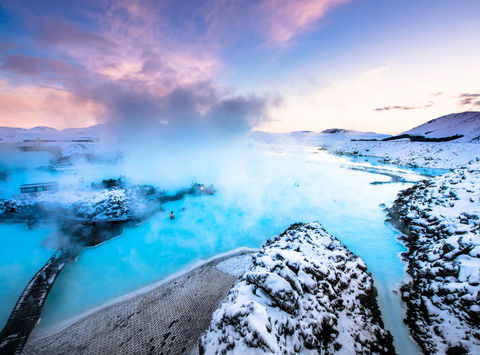
Geothermal Waters
The geothermal pool has become a constant, bubbling presence in the lives of Icelanders – and an essential experience whatever time of year you visit. During winter, there’s something particularly special about gently poaching yourself in the steaming waters of the Blue Lagoon near Reykjavík, the Golden Circle’s Secret Lagoon or the Nature Baths at Myvatn in North Iceland. Iceland has dozens of other natural geothermal wonders (including some that are definitely too hot for a dip), including the stunning new Sky Lagoon in Reykjavik – an incredible 70m-long infinity pool right on the edge of the ocean, geothermally heated at a constant 38-40 degrees and surrounded by cliffs and waterfalls.
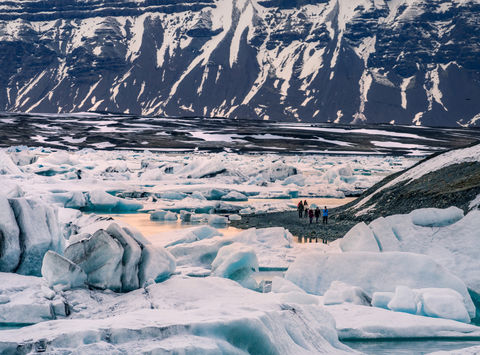
Ice caps and Glacial Lagoons
One of the unique aspects of Iceland, of course, is that even during the height of summer you can experience natural wonders that are distinctly ‘wintry’. The country’s permanent ice caps, for example, are not only an incredible spectacle, but ‘year-round winter playgrounds’ for activities such as snowmobiling, glacier trekking, ice-caving (see above) and venturing into a man-made tunnel on the unique Into the Glacier tour in West Iceland’s Langjokull icecap. It’s along Iceland’s South Coast, perhaps, that ice takes on almost mythical qualities. Europe’s largest icecap by volume, Vatnajokull blankets entire mountains (and several active volcanoes), its ancient ice reaching depths of up to 950m. Contained within the Vatnajokull National Park (one of Europe’s largest), the icecap rises to over 2,000m above sea level, but it’s at the coast that some of its most dramatic scenery can be witnessed. With countless icebergs scattered across a large coastal lake, Jokulsarlon glacial lagoon is one of Iceland’s greatest natural wonders. It was created as the Breidamerkurjokull glacier (one of the icecap’s many frozen tongues) retreated from the coast, calving icebergs into a lagoon as it went. Cross over the road and you’ll crunch onto a black sand beach littered with crystal icebergs of all shapes and sizes that have washed ashore.
Feeling inspired?
During winter, Discover the World’s small-group escorted tours in Iceland take you in search of everything from auroras and orcas to frozen waterfalls and ice caves. If you want to travel independently, a winter self-drive is easier than you might think – especially along the south and west coasts where the Gulf Stream helps to keep the climate mild.
Northern Lights Special is our signature small-group escorted winter holiday, including Hotel Ranga, the natural wonders of the Golden Circle, a visit to Reykjavik and the Blue Lagoon, while Northern Lights, Glaciers & Waterfalls takes you on a self-drive odyssey to Hotel Husafell and Iceland’s ‘wild west’.
Send an enquiry, or speak to one of our Travel Specialists on 01737 214 250.
























